I first saw Joe Satriani perform in the early 80s and I've been a fan ever since. I had been talking to local musician Chris Kettner about joining his band (Zula Pool) because their guitar player (Joe) was leaving to start a solo career (good move!), so Chris invited me to their gig. I was floored. Here was a guy with astounding chops as well as a sense of history. I could hear bits and pieces of every great rock guitar player I had ever heard, integrated into his own melodic and flashy style. He was playing on the edge of chaos, but it all made sense.
We talked a few years later in the 90s when Opcode was looking for a prominent guitar player that hadn't yet gone digital to help show other guitar players how to use Opcode's Studio Vision. Joe seemed perfect because on top of being so talented and creative, he is thoughtful and articulate about his craft. Unfortunately for us he was very happy with his PortaStudio and writing out parts in notation, so he passed, a committed analoger at the time.
Fast forward about 20 years and millions of records sold I had another chance to talk to him. As one would expect he made the jump to using software to record 10 years ago and is now a dedicated Pro Tools user. He is still thoughtful and articulate and definitely fun to talk to.
So how does this fit with KVR…? It's not like Joe doesn't use synths. They do pop up occasionally, but his primary focus is on live playing, either in the studio or on stage so effects plug-ins figure into his work more often. Borg Sex is a good example.
Joe is very much about playing live and his live set up has already been well-documented as well here. He uses the software tools only for composing and recording. My objective with this piece was to learn more about how he interacts with technology. Regardless of what music you listen to there is much that can be learned from someone who takes music as seriously as Joe does.
Do you take a recording set up with you on the road?
It depends. When I'm on a solo tour, I'm playing six to seven shows per week. Our shows are two and a half to two hours and forty-five minutes long, and I'm the guy playing all the melodies and all the solos. I have to keep a lot of music in my head and there are physical demands that are put on me to be able to perform that way. So the last thing I want to do on my days off is sit in my hotel room and play guitar. The burnout factor is something you really have to monitor on tour, especially if you're going to be touring for a year and you want to be excited about going on.
Now when I'm with Chickenfoot, I'm in a four-piece band with a lead singer and I play rhythm guitar 90% of the time. The show is an hour shorter and we play almost half as many shows per week. So suddenly it's a very different kind of thing.
We have this thing in Chickenfoot where we improvise together for a good forty-five minutes every night before we hit the stage. We're playing through little amps and a little rubber drum kit and we're generally improvising and writing and making little fun recordings. There's a lot of creativity that goes on that's centered around the gig and most of the time I find myself really not wanting to bring a rig to work by myself. My live rolling gear is completely different than my home gear. It's just night and day.
How do you record your guitar?
Well, when I'm at home, there are two ways I do it. I've got my Marshall heads that have recording outputs, which are really amazing sounding. The recording out feature on the new Marshall heads is so reliable and it sounds organic. So if I really want the amp head sounds, I'll do that.
But I'll tell you what I started doing about two years ago, is recording DI and using software guitar amplification, primarily because I thought if I put in a performance that's a once-in-a-lifetime performance on this particular song, I'm going to want to keep it. And I don't trust doing it here at home. But if I record it direct, it'll sit there in the session and then when we get to a real studio and we've got the real band recorded with microphones and a big room, we can re-amp that performance, and re-record it. And that's what we did quite a bit for the Black Swans and Wormhole Wizards record. There are quite a few songs that I had recorded using SansAmp or Guitar Rig, but they were all recorded DI. I would monitor those software patches at home, and then when we got to Skywalker, we either used a combination of those software guitar patches, or we would send the DI out into Marshall amps and different speakers and mic them anyway we want based on what we had captured from the band.
Basically I record my entire guitar and bass right into a Millennia Media STT-1. It functions as a DI, transformer-less or with a transformer, and you can use a tube pre-amp or solid-state input. It's got a parametric EQ. It's got an optical compressor. You can bypass all of it and just let it flow through. It's something that John Cuniberti had suggested I use many years ago and I've used it for as long as they've been out I think.
I remember the first time we used a SansAmp, John and I were recording Flying in a Blue Dream, and they had just created one and he was hip to the idea of "hey let's use SansAmp so we get out of the hassle of trying match guitar parts in different studios," because we were kind of moving around a lot at the time. One song might get recorded in three places and he was thinking this was going to be insane for Joe's guitar sound unless we can take it with us. And we had done that before, going directly into mic pres or using the Tom Scholz Rockman and we tried every little funny piece of gear, because we were trying to do anything that was the antithesis of mic'ing up a Marshall stack.
The signal to the FOH guy is exactly the same every time….
It is. To be able to have a DI recording is important. We do it live as well. Anytime we know we're going to be recording live shows, after my pedal board, we go into a DI which splits my signal DI direct to Pro Tools and the other side of the signal continues on through my amplifiers. So if we get a great performance but for one reason or another, if the guitar isn't sounding right or a microphone breaks down or a head blows up, we always have this DI recording and we can re-amp it using Cuniberti's Reamp, which is now made by Radial, and you can send that DI signal back out into any guitar amp of your choice and re-record it, no latency. And it reacts in the amplifier just like you were playing into it.
So you are using SansAmp and Guitar Rig. Do you have any favorite plugins other than those two?
I don't think I've used any others, on any sessions. I know there's a ton more out there. Guitar Rig has got this huge selection and it's got effects built in and it's a little bit more fun to play with, but I find that they're a little bit hard to mix. There's something funny about most of that stuff, I've got to say. If you're recording a pop song and it's going to be highly limited and compressed and the guitar is going to be coming in and out in spurts, then it's great. But if you're recording a piece of music that's more classic rock or the stuff that I do, where the guitar sound is carrying an enormous amount of the message of the song, sometimes those software patches can almost make you think that there's some kind of a phasing problem.
So I tend to use them in spurts if I actually have to use them for a recording that I'm doing, I'll use it just for a solo. But sometimes they just don't hold up, let's just put it that way. And it's a funny thing because I'm sure people that play instruments know that you get one bass guitar that's great but you always say to yourself "stay away from the ninth fret on the low E string" because it sounds horrible. So instruments have dead spots and parts of the neck that are a little bit wonky, but sometimes I think the software and guitar amp stuff has the same kind of problem where it sounds great for a D chord, an E chord and an A chord, but as you get up the neck, suddenly it sounds really annoying. It falls apart. Some do better than others for different frequencies. Some of the software seems to do better when they're not distorting the guitar so much, when it's just a clean sound. And others seem to excel with all sorts of distorted sounds. But you know, once again you can always take these sounds and re-amp them again, which we do as well. If you want real ambience or a character of a microphone going through a limiter and recording the ambience of a room, you just re-mic it, and it just breaths organic life into the recording.
When you're composing, is there a particular drum plug-in that you like to use?
I've used BFD and Battery the most, but I try not to get too crazy with those things for two reasons. Number one, if you get too much into the sound of a drum suite program, it will affect how you produce the rest of your instruments around that, which can be a mistake. It's not a real drummer in a real room and, unless you're doing dance music or something like that, most likely it's going to sounds really different when a real drummer goes to interpret your material.
The other thing that's a real problem is drummers hate it when you give them demos that are completely explicit, because they're listening to the demo and obviously they are trying to imagine what they're going to do over it. And very often drummers have said to me just give me two and four and that kind of thing. Just give me a click or a basic pattern that repeats so I can forget about it and I can imagine what I think I want on top of it.
You can imagine if you were given a guitar demo and you're supposed to play guitar on it and they wanted you to come up with something, but the demo has some very explicit guitar on it, it's very hard to see past it. So I've learned to ease up on my drum production in the demos and just to give an essential rhythmic performance and I think, number one, informs the prospective drummer as to what the real groove of the thing is. And number two, any other rhythmic things that I need to hear for tracking, just to keep me tight, so that when I remove that drum machine performance, that software drum performance, that everything sounds like it's in time and a real drummer can play to it.
Often I'll bring in a drummer, keyboard player, bass player and, including myself, we'll play live to a number of guitar tracks and keyboard tracks that I've recorded at home that were done to click. So in that way, whatever percussion suite I'm using, it's just got to be dead on.
When I listened to The Golden Room, it sounded like there's a loop in there, but is that actually a performance then?
It's a combination. That actually is about six different tiny loops… I think they were 16-bit very short loops that were in performances. And I'd gotten them many years ago. So I chopped them up and I created a loop that was about seven minutes long. And then I created guitar loops that went on top of it. Some of them were like six bars and some of them were eight bars. They would repeat at different intervals. Then when we went to Skywalker, Jeff was playing his drum kit and he played this funny little Korg drum, it's called a wave drum. Jeff programmed a number of Indian instruments into it and then he played it live along with us. And then I played the melody live, Alan Whitman was on bass, and Mike Keneally was playing the keyboards live as well, electric piano. And I think there were some other Mellotron type strings that I had recorded at home as well. So there was a combination of stuff that we played live to. But you can tell from the beginning and the middle and the end that there's a lot of improvising going on. We had this long loop that went on that we could just play to.
I'm just curious, I can't remember which tune it is, but there's one in 6/8.
Yeah, that's Two Sides to Every Story. I was influenced by a sax player, Eddie Harris, when I was growing up. My mother used to listen to him a lot and I just thought he was one of the coolest jazz players. And I could relate to him because he wasn't so traditional jazz. He had a thing about sound. I'm a rock n' roll generation kid, so sound was extremely important and the way that he manipulated his horn to create interesting sounds appealed to me. And he had this way of playing in 5/4 or 10/8 or 12/8 or 6/8 or 9/8 and just make it groove. He was funky, so that was kind of like a tribute to him, that particular song.
And as an aside, it's interesting you bring that up, because that's a complete live performance by Jeff and the band. They were playing live to guitars that I had already recorded at home and I was playing an additional rhythm guitar live and so that's Jeff, no Pro Tooling on him, he's just grooving to it. But the melody guitar was actually recorded DI and it was an old vintage 1969 maple cap Olympic white Strat, you know? An old Hendrix fetish guitar… And then we re-amped it and put it out into a two rock amplifier and that thing sounds beautiful. You never would know that it went through that kind of a weird journey but it was recorded DI at my home studio and then re-amped at Skywalker and when we were tracking as a band to it, that's what we were listening to. I think the solo may have been SansAmp, the software SansAmp.
What is the best thing you've gained from switching from tape to software and what has been the biggest problem?
Well you know the great thing about tape is that it's full bandwidth. I think the human body appreciates the presence of frequencies even beyond our audible range, I believe we hear from 20 Hz to 20,000 Hz. Having said that, if you've ever tried to edit music on two-inch tape, you also know how difficult the recording medium can be. But there is nothing better than a good band playing a great performance and recorded by talented engineers on a piece of good tape. That's about as good as it's ever going to get, period.
But we live in the real world, so how many people know how to mic up a band anymore…? I see that as a lost art because as tape machines go away and more is done in the computer, their creativity and technique has shifted away from micing up a drum kit and knowing where to put the bass player. Good producers know how to manage a room full of musicians, not only for sonic reasons, but for personal performance. But when people are primarily overdubbing and interfacing with machines, that whole thing becomes useless and a different technique takes over for the engineer and the producer involved.
I think the pluses are the obvious ones: non-destructive editing. I think that's the biggest improvement. If you're a person that gives out very inspired performances at any given moment, and doesn't repeat yourself, the recording in the digital medium is fantastic because there's endless room for endless takes and there's no problem combining any take with any other take. And those are the limitations of the analog world and using tape.
I remember hearing Roger McGuinn talk about recording Mr. Tambourine Man. He said that one that finally appeared on the record was like take number 85 and the only reason it took 85 takes was all the other takes, someone would make a huge mistake and they kept having to do it over and over again until they made the least amount of mistakes. And that was simply the one where we made the least amount of mistakes, and that was the one that they used for the record. But he said it nowhere near was the best one they did. The best one we did was the first two or three, which is really sad, you know?
But now, as a producer, I can go tell Jeff Campitelli, go out there and play as many crazy things as you want. I don't even care if they're out of time, but just try whatever you want and don't worry about consistency. Because afterwards you're going to come back and you may listen to seven takes and gain fantastic insight into how to make the recording better by saying I was grooving on take one but that fill from take seven should be here and blah, blah, blah. Before you know it, the drummer is engaged in the recording very much the way a vocalist has been, or a guitar player. Because we've been over-dubbing for decades.
You listen to Beatles' records and there're all sorts of vocals on top of other vocals and guitar performances from other songs laid in. And drummers kind of got the short end of the stick because it was very difficult to splice drum performances. But now it's quite easy. So from a composer's point of view, it's great to be able to have that nondestructive editing at your fingertips so that you can check out every possible performance idea. And from an overt performers point of view, you don't have to be so conservative anymore for fear that you're going to ruin a take because everything can be repaired.
How do you find new products? There are so many things out there, how do you keep from going crazy?
First of all, I am crazy, and that's what allows the pedal neurosis to continue unabated all of these years. I have a lot of friends that are guitar players and we're always looking for the new pedal or a new sound. So we're always trading stories about this new thing or that new thing. People are always sending me stuff. A really good resource that I've found is a place call MusicToyz. It's run by a friend from my old hometown on Long Island in New York, and his name is Teddy Rasch. Teddy is the kind of guy where you can call him and say what's cool? What have you seen come through your store recently? And he seems to have his finger on the pulse of interesting gear. And since he sells worldwide, he seems to know what comes back with complaints from customers and what's hard to keep in stock because people love using it. Many years ago I called him up and we were talking and I said I'm looking for something really crazy and he was the one who directed towards the POG (Polyphonic Octave Generator), which I love.
Sometimes it's not about the gear, but how you interface with it and what you use it for. People use effects in a lot different ways. I find that the community of guitar players that I'm friendly with, we trade stories every week about cool pedals and we're always sending each other pedals to check out.
Have you found a piece of software that gives you that kind of inspiration that pedals or analog gear have given you?
I got the entire suite of Arturia products two years ago and I love that. I just use every keyboard in there when I'm making demos. I find that to be very inspirational. And it was through their whole suite that I got into bringing back organ and electric piano sounds. I like M-Tron from GForce. Compressors are great. The Bomb Factory stuff I've always enjoyed.
How about delays?
The delays can be funny sometimes. I find that if there's anything that changes when you open up a session again, it's the delay. Some effects plug-ins can be funny when you're working at home and then you bring that project to another studio. So I tread very lightly...
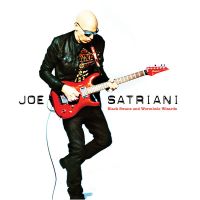 I use Pro Tools mainly for composition. In the early days I though oh wow, I can record from home. But then I realized that to make a great recording, you need great people around you. I truly believe that. I truly believe that mixing it up with people who have talents in other areas than your own is great. Just because you're at home and you can record in your boxer shorts, doesn't mean that it's something that everyone else in the world wants to hear for the next fifty years. At some point you have to get over the excitement of being able to record yourself and you have to say, you know, there was a reason why they would spend $2 million to create a beautiful room and people would study for decades how to record people properly. You need a great acoustic environment and talented people to make really fantastic recordings.
I use Pro Tools mainly for composition. In the early days I though oh wow, I can record from home. But then I realized that to make a great recording, you need great people around you. I truly believe that. I truly believe that mixing it up with people who have talents in other areas than your own is great. Just because you're at home and you can record in your boxer shorts, doesn't mean that it's something that everyone else in the world wants to hear for the next fifty years. At some point you have to get over the excitement of being able to record yourself and you have to say, you know, there was a reason why they would spend $2 million to create a beautiful room and people would study for decades how to record people properly. You need a great acoustic environment and talented people to make really fantastic recordings.
My recording studio is a place where I write and where I can put in performances and capture them so they can be re-recorded and reinterpreted in a real studio. But I'm not really thinking I'm going to create sounds or mixes that, all on their own, are going to be keepers, because the room I'm in is not designed to be a studio so I know there's going to be problems sonically. As humans, we get used to anything. You can mix a record in your car and after ten minutes your brain says I can get used to this, but that's not a good idea. I wouldn't recommend anyone mixing an album in their car. But things will change. They always do.
Five years from now… I mean look at the transition from regular headphones to earbuds to something like Beats. It's insane to think that anyone could mix a record to sound good on all three of those things. You just can't chase it. All you can do is create a great sounding recording that is not jumping all over the place and filled with horrible peaks of transient frequencies. I think to think that you're going to put on some earbuds and create a great mix and have it sound good in a car, elevator, living room, restaurant, arena, coming across computer speakers… it won't work that way. You still have to make what we would call a great sounding recording, and it's got to sound great in the mastering room.
So Bonus Questions… You have a new Marshall JVM410 signature amp….
Yes, it just came out in March.
How is it different from the standard JVM410?
Quite different. We reduced the high-end emphasis that was being employed on the channels OD1 and OD2 almost entirely. We lifted… when I say we I mean I requested and it was somehow magically made so by Santiago Alvarez, who's a genius engineer. He was able to get rid of a lot compression that was really bothering me about the amp, because for professional use it's just pointless to have that kind of compression. At 85 db in somebody's bedroom it's kind of useful, that's about it. But there are all kinds of pedals that do that. So in order to open the amp up to be more dynamic and full and rich sounding, we went through and just sort of made it so. We brought the sounds out of the amp so it would jump out of the speakers more.
We did some big changes to Channel 1, where we made the clean channel exactly like the original 6100 clean channel and then we took its two other modes, the orange and red mode, and we gave the a hint of distortion for two reasons. One, they could be barely distorted for that chimey, kind of rock sound, and going from orange to red gives you a nice step up while keeping the same profile of tone. That was a big shift from the way the original 410 channels sounded.
And the other thing was that we adjusted the gain inputs for those channels so that they would sound really great with distortion pedals and overdrive pedals, which for years is how I used to use the original Marshall amps. With channel two, we took contour tonal quality of the red mode and we made it a little more big and even sounding. It's one of my favorite channels in that amp because it has got three of my favorite Marshall tones, like a JMP and then an 800 and then a modified 800 sound if you go from green to orange to red.
We took OD1 and duplicated it in OD2, so now overdrive one and overdrive two can sound exactly alike, which is really great if what your primary sound is is one and you just want to have it get louder or softer or you want the same sound to get louder with a little less bass or something now. For total practical reasons of playing live, now you can do that.
We added this other button that can be used and programmed for either channel that allows you to have a mid-shift which mimics the kind of shift that was in the original 410's OD2. We took the presence and the resonance and tweaked their peak points so they'd be more useful sounding. We simplified the effects loop. Then we got rid of the reverbs entirely and then in their place we put four independent noise gates, fully programmable...
Do you play with reverb live?
Yeah, I like using a pedal called Wet. It's Neunaber, and it's called a Wet Reverb pedal. I really love that pedal. That thing is just really great sounding.
Last question: What do you listen to for enjoyment?
I listen to a million things. Let's see what did I recently add? Animals as Leaders. Tosin Abasi is the guitar player and he's just absolutely insane. Mos Def is one of my favorites and I finally went back and got another copy of Black on Both Sides. I just think it's a really cool record. I bought a Nat King Cole collection. I've got a couple of CDs from Brain, the drummer, amazing drummer. I listen to the new music and I listen to the old music. It's kind of all over the place. I might listen to some old Cactus record that somebody sent me and then I might listen to Beethoven for awhile and then go back and listen to nothing but Hendrix for a couple of days.
I find with Hendrix that if you listen to one tune, you have to listen to ten more.
It's really something, you know. The first four Hendrix records including Band of Gypsys, it's just so intense. It's the grimoire and the bible of electric guitar all in one. Everything is there. He always sounded like a virtuoso who never practiced a day in his life. It's like he thought of it the second before it came out on his fingers. It's really remarkable.
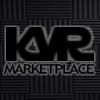
Find ARP 2600 V3, BFD 3, Jup-8 V 4, Mini V4, Modular V3 and Pro Tools Ultimate in the KVR Marketplace



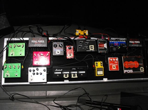
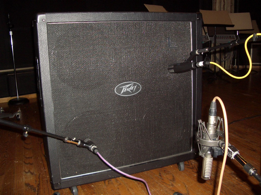
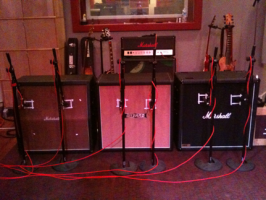
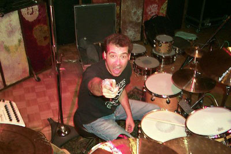
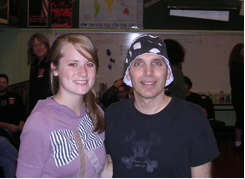
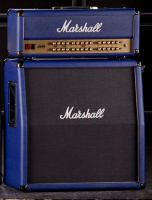
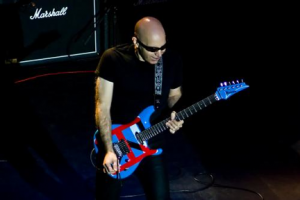
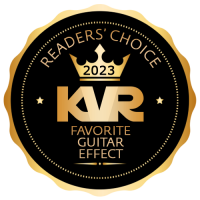

 Other Related News
Other Related News
